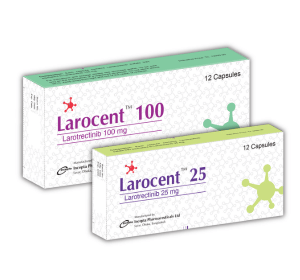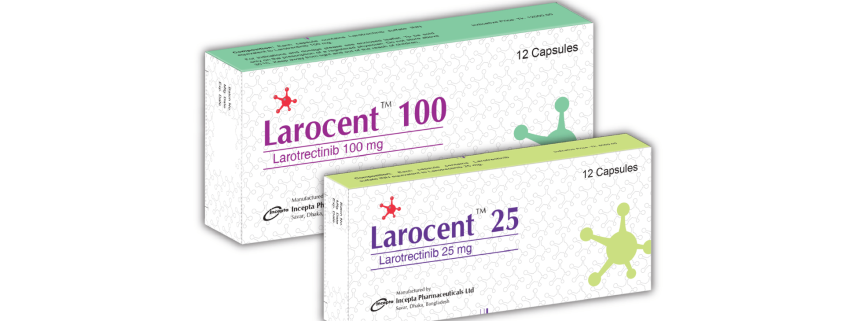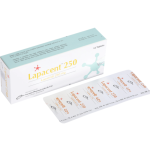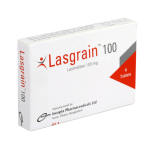Larocent(Larotrectinib)

Therapeutic Group: Others
Presentation
Larocentâ„¢ 25: Each capsule contains Larotrectinib sulfate INN equivalent to Larotrectinib 25 mg
Larocentâ„¢ 100: Each capsule contains Larotrectinib sulfate INN equivalent to Larotrectinib 100 mg
Description
Larotrectinib is an inhibitor of the tropomyosin receptor kinases (TRK), TRKA, TRKB, and TRKC. In a broad panel of purified enzyme assays, larotrectinib inhibited TRKA, TRKB, and TRKC with IC50 values between 5-11 nM. One other kinase TNK2 was inhibited at approximately 100-fold higher concentration. TRKA, B, and C are encoded by the genes NTRK1, NTRK2, and NTRK3. Chromosomal rearrangements involving in-frame fusions of these genes with various partners can result in constitutively-activated chimeric TRK fusion proteins that can act as an oncogenic driver, promoting cell proliferation and survival in tumor cell lines.
In in vitro and in vivo tumor models, larotrectinib demonstrated anti-tumor activity in cells with constitutive activation of TRK proteins resulting from gene fusions, deletion of a protein regulatory domain, or in cells with TRK protein overexpression. Larotrectinib had minimal activity in cell lines with point mutations in the TRKA kinase domain, including the clinically identified acquired resistance mutation, G595R. Point mutations in the TRKC kinase domain with clinically identified acquired resistance to larotrectinib include G623R, G696A, and F617L.
Indications
Larotrectinib is a kinase inhibitor indicated for the treatment of adult and pediatric patients with solid tumors that:
• have a neurotrophic receptor tyrosine kinase (NTRK) gene fusion without a known acquired resistance mutation,
• are metastatic or where surgical resection is likely to result in severe morbidity, and
• have no satisfactory alternative treatments or that have progressed following treatment.
This indication is approved under accelerated approval based on overall response rate and duration of response. Continued approval for this indication may be contingent upon verification and description of clinical benefit in confirmatory trials.
Dosage & Administration
• Select patients for treatment with Larotrectinib based on the presence of a NTRK gene fusion
• Recommended Dosage in Adult and Pediatric Patients with Body Surface Area of at Least 1.0 Meter-Squared: 100 mg orally twice daily
• Recommended Dosage in Pediatric Patients with Body Surface Area of Less Than 1.0 Meter-Squared: 100 mg/m2
orally twice daily
Side Effects
The most common adverse reactions (≥ 20%) with Larotrectinib were fatigue, nausea, dizziness, vomiting, increased AST, cough, increased ALT, constipation, and diarrhea.
Precautions
Neurotoxicity: Patients and caretakers should be advised about the risk of neurologic adverse reactions. Patients should be advised not to drive or operate hazardous machinery if experiencing neurotoxicity. Larotrectinib should be withhold and modify dosage, or permanently discontinue based on severity.
• Hepatotoxicity: Liver tests including ALT and AST should be monitored every 2 weeks during the first month of treatment, then monthly thereafter and as clinically indicated. Larotrectinib should be withhold and modify dosage, or permanently discontinue based on severity.
• Embryo-Fetal Toxicity: Can cause fetal harm. Females with reproductive potential should be advised about the potential risk to the fetus and to use effective contraception.
Use in Pregnancy & Lactation
Pregnancy & Lactation: Larotrectinib can cause embryo-fetal harm when administered to a pregnant woman. There are no available data on Larotrectinib use in pregnant women. There are no data on the presence of larotrectinib or its metabolites in human milk and no data on its effects on the breastfed child or on milk production.
Pediatric Use: The pharmacokinetics of Larotrectinib in the pediatric population were similar to those seen in adults.
Geriatric Use: Clinical studies of Larotrectinib did not include sufficient numbers of subjects aged 65 and over to determine whether they respond differently from
younger subjects.
Hepatic Impairment: No dose adjustment is recommended for patients with mild hepatic impairment (Child-Pugh A). Larotrectinib clearance was reduced in subjects with moderate (Child-Pugh B) to severe (Child-Pugh C) hepatic impairment. Reduce Larotrectinib dose as recommended.
Renal Impairment: No dose adjustment is recommended for patients with renal impairment of any severity
Drug Interaction
• Strong CYP3A4 Inhibitors: Coadministration of strong CYP3A4 inhibitors with Larotrectinib should be avoided. If coadministration cannot be avoided, reduce the Larotrectinib dose.
• Strong CYP3A4 Inducers: Coadministration of strong CYP3A4 inducers with Larotrectinib should be avoided. If coadministration cannot be avoided, increase the Larotrectinib dose.
• Sensitive CYP3A4 Substrates: Coadministration of sensitive CYP3A4 substrates with Larotrectinib should be avoided.
Storage
Do not store above 30 C. Keep away from light and out of the reach of children.
Commercial Pack
Larocentâ„¢ 25: Each box contains 2 blister strips of 6 capsules.
Larocentâ„¢ 100: Each box contains 2 blister strips of 6 capsules.



